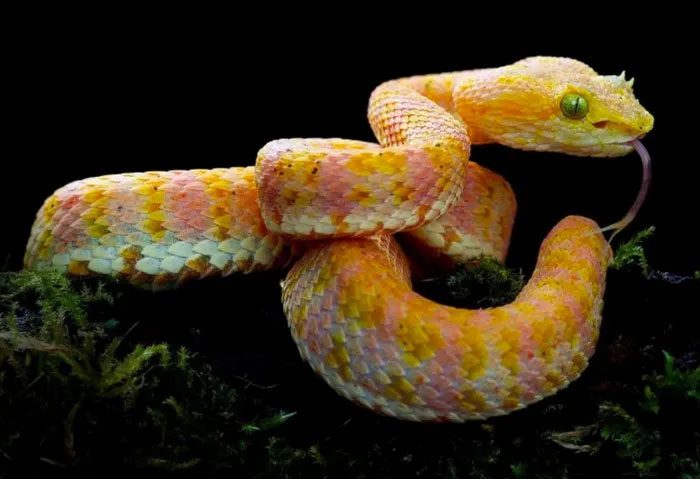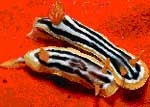According to a recent article in the journal Evolutionary Systematics, the Eyelash Viper was previously thought to be a single species, but research on this snake began after a scientist was bitten by one in 2013.
Five new species have been named Rahim’s Eyelash-Pitviper (Bothriechis rahimi), Hussain’s Eyelash-Pitviper (B. hussaini), Shah’s Eyelash-Pitviper (B. rasikusumorum), Klebba’s Eyelash-Pitviper (B. klebbai), and Khwarg’s Eyelash-Pitviper (B. khwargi), in honor of several supporters of conservation and biodiversity protection. Three of these five species are endemic to the cloud forests and coffee plantations in the eastern Cordillera of Colombia, while Hussain’s Eyelash-Pitviper is found in southwestern Ecuador and northwestern Peru, and Rahim’s Eyelash-Pitviper inhabits the Chocó rainforest along the Colombia-Ecuador border.

Five new snake species have been discovered lurking deep in the cloud forests of Colombia and Ecuador.
These new species are all eyelash vipers, named for the distinctive scale ridge above their eyes. While these features may appear intimidating, their function remains a mystery to researchers.
According to the research team, these snakes are venomous but are not as dangerous as other eyelash viper species. Co-author of the paper, Lucas Bustamante, a biologist and wildlife conservation photographer from Ecuador, is the researcher who was bitten by the Rahim’s Eyelash-Pitviper during an expedition.
Bustamante stated: “The venom of some of the new species is less lethal and does not cause more bleeding than the venom of typical Central American eyelash vipers. I experienced localized pain, dizziness, and swelling, but recovered after receiving three doses of antivenom within less than two hours of being bitten. The wound also did not leave a scar.”

Four of the five new snake species are considered endangered.
The eyelash viper has another unique characteristic: a wide variety of colors, meaning individuals of the same species can have very different appearances – a phenomenon known as polymorphism. The same area can host multiple different morphs of the same species, such as turquoise, moss, yellow, purple morphs, etc. This color variation may have evolved to allow eyelash vipers to blend into various vegetation and backgrounds, although the precise reasons for this polymorphic system remain largely unknown.
Co-author Alejandro Arteaga, a herpetologist and president of a non-governmental organization focused on biodiversity in Ecuador, noted: “No two individuals have the same coloration, even among siblings.”
According to the researchers, four out of the five new species are considered endangered, mainly due to the destruction of their limited habitats. Approximately 50-80% of the small geographical range of these species has been destroyed, and they face even greater threats. They emphasize that these discoveries highlight the importance of protecting the forests that these snakes and millions of other species call home.
“Protecting eyelash vipers is crucial, as unlike other species, they cannot survive without a fully covered canopy. Eyelash vipers also require careful protection and monitoring because poachers often target species with striking appearances,” Arteaga stated.





















































